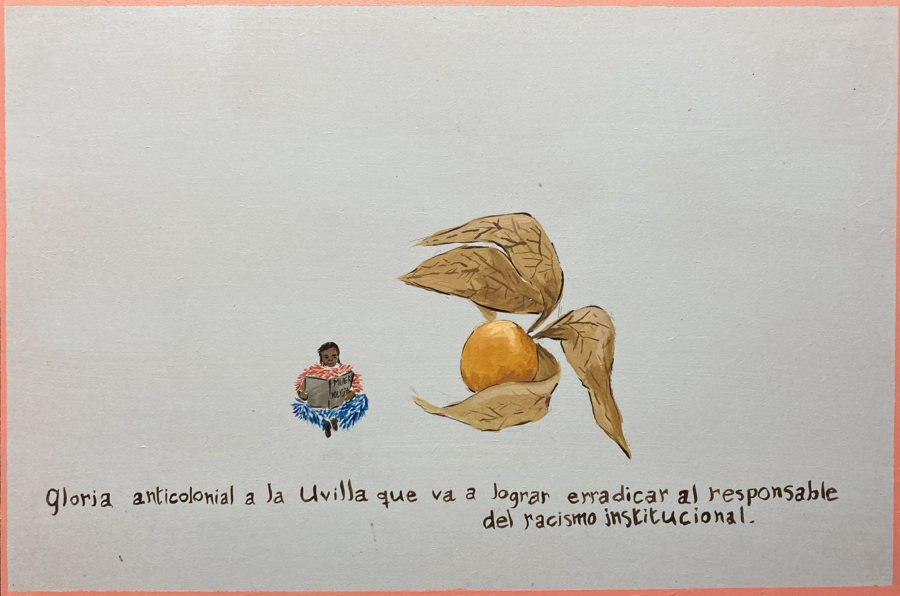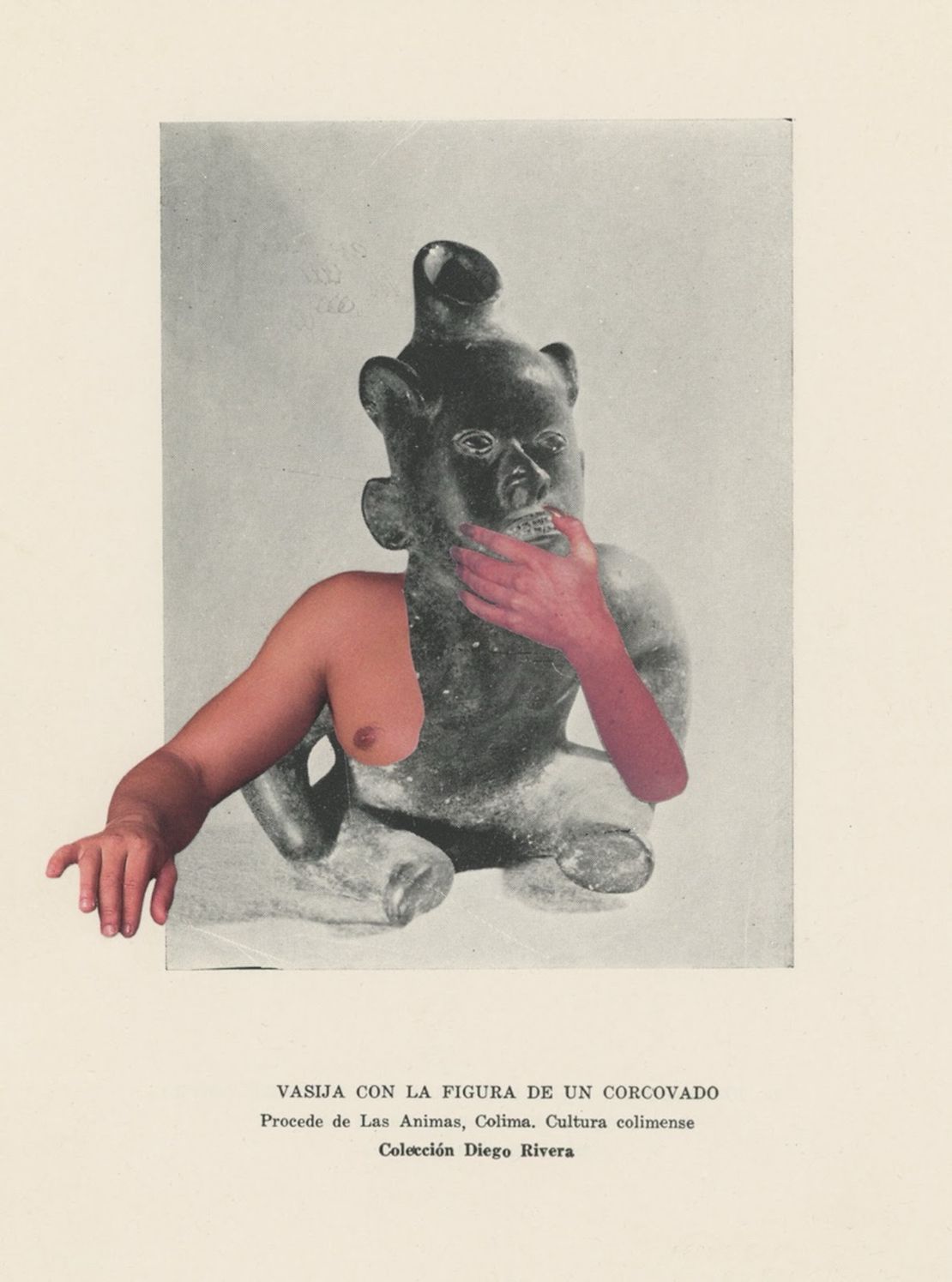Abstract
Daniela Ortíz’s work on migration has a strong connection to the territory, as migration involves geographic displacement and the transformation of spaces. Her artwork also addresses the social, political, and cultural implications of migration in relation to the territory, such as the formation of hybrid identities, diaspora, and resistance against the loss of ties to the place of origin.
The artwork “La rebelión de las raíces” by Daniela Ortiz portrays a series of scenarios where migrants, racialized individuals, plants, spirits from the global south, and animals unite to confront European institutional racism and colonial structures. Uvillas and Chontacuros are featured prominently in Daniela’s paintings, which she created with the resilient Ecuadorian migrant community in Europe in mind. Through her votive offering paintings, the artist not only envisions forms of justice in response to a history marked by extraction, slavery, and the plundering of resources by the West; her art also serves as a conduit between the earthly and the sacred realms. Daniela’s paintings possess a propitiatory character as if she were communicating with higher forces capable of altering the course of life. This ritualistic dimension is even echoed in the rhythmic composition of the texts within her artworks. The plants, serving as the protagonists in her narratives, embody an idea of healing that extends beyond the individual body, challenging the limited perspective of liberal healing. Instead, her work emphasizes the urgent need to restore a fractured ecological and social equilibrium. Through “La rebelión de las raíces,” Daniela Ortiz invites us to reflect on the power of collective action, resilience, and the interconnections between humans, nature, and spirituality. Her paintings advocate for comprehensive healing that addresses the deep wounds inflicted by historical injustices and seeks to restore harmony within our world’s ecological and social fabric.

